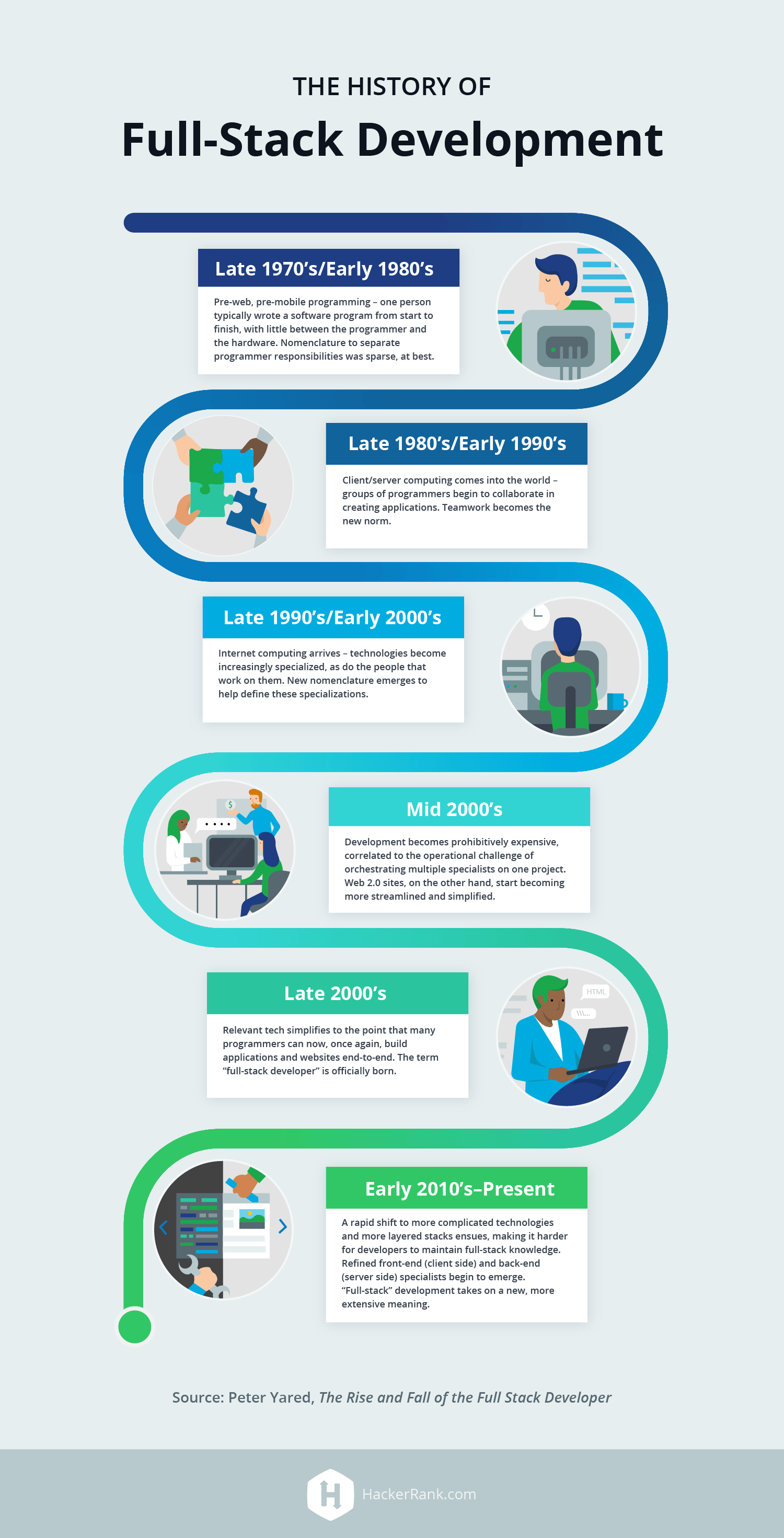Bgroho Insights
Your daily source for news, tips, and inspiration.
Code Juggling: Why Full-Stack Developers Are the Modern Day Wizards
Discover the magic of full-stack developers and how they wield code like modern-day wizards. Uncover their secrets now!
The Art of Code Juggling: How Full-Stack Developers Master Both Frontend and Backend
The art of code juggling is a skill that every full-stack developer strives to master as they navigate the intricate landscapes of frontend and backend development. While the frontend deals with everything users interact with, utilizing languages like HTML, CSS, and JavaScript to create dynamic and responsive user experiences, the backend encapsulates the server-side logic and database management using technologies such as Node.js, Python, or Ruby on Rails. By mastering both realms, developers not only enhance their versatility but also streamline the development process, allowing for a more cohesive product and quicker iterations.
To achieve proficiency in this dual-facing role, full-stack developers often adopt a combination of strategies:
- Continuous Learning: Staying updated with the latest frameworks and tools in both frontend and backend.
- Hands-On Practice: Engaging in personal projects or contributing to open-source initiatives to apply learned skills.
- Collaboration: Working closely with designers and backend specialists to understand the interconnectedness of their work.
Ultimately, the ability to juggle code across both fronts not only broadens a developer's skill set but also positions them as valuable assets in fast-paced tech environments.

Five Skills Every Full-Stack Developer Needs to Become a Modern-Day Wizard
In today's digital landscape, a full-stack developer is often regarded as a modern-day wizard, possessing a unique set of skills that enables them to seamlessly work across both the front-end and back-end of applications. To thrive in this role, one must master JavaScript, the language that powers interactivity on the web. Furthermore, familiarity with HTML and CSS is essential for crafting visually appealing user interfaces. These foundational technologies don't just form the bedrock of web development; they also allow developers to create engaging and responsive designs that enhance user experiences.
Additionally, a proficient full-stack developer needs to understand version control systems, like Git, which allow for efficient collaboration and tracking of code changes. Knowledge in database management, including SQL and NoSQL databases, is vital for storing, retrieving, and manipulating data effectively. Finally, proficiency in API development and understanding RESTful services further empower developers to connect different parts of web applications efficiently. These five skills together give full-stack developers the ability to conjure up robust, scalable solutions that meet the demands of modern software challenges.
Why the Demand for Full-Stack Developers is Rising: A Deep Dive into the Tech Landscape
The demand for full-stack developers is witnessing a significant surge, driven by the rapid evolution of technology and the need for versatile professionals who can navigate both the front-end and back-end of web development. As businesses increasingly prioritize digital transformation to stay competitive, there is a clear trend toward hiring developers who possess a broad skill set that allows them to create seamless and efficient user experiences. Full-stack developers are uniquely positioned to adapt to various roles, whether it’s designing an engaging interface or managing database functionality, making them invaluable in a fast-paced tech landscape.
Furthermore, as startups and established companies continue to embrace agile methodologies, the need for full-stack developers becomes even more pronounced. By having a team member who understands the entire development process—from initial concept through to deployment and maintenance—organizations can streamline communication and enhance productivity. This holistic approach reduces bottlenecks and fosters innovation, as full-stack developers can contribute to various stages of a project without the need for extensive handoffs or redundancies.